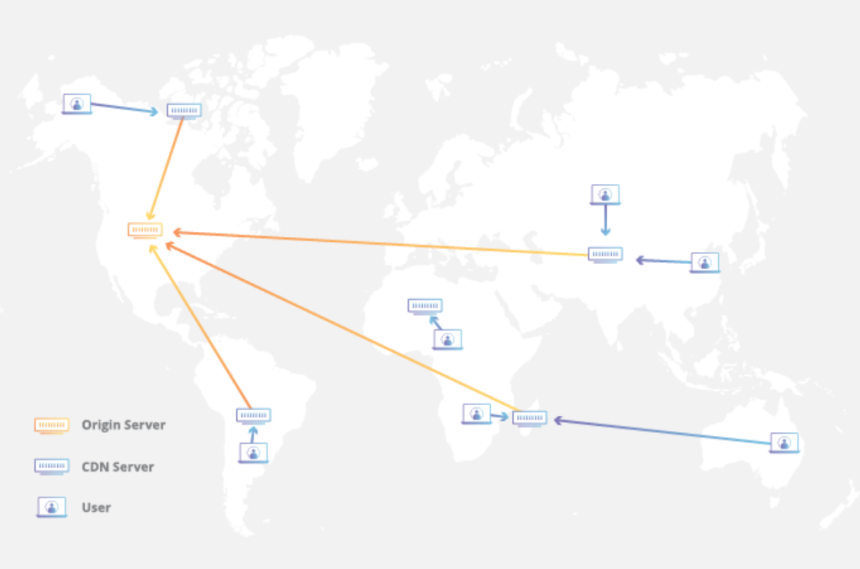A big part of a video streaming service workflow is to deliver videos to its viewers. Some platforms cover only people from their city or country, and some transfer videos to people over long distances. They all use a CDN to transmit videos from servers to end users’ devices.
CDN is a Content Delivery Network. It is a network of distributed servers that deliver video content with minimum latencies. As a result, viewers get a smooth viewer experience and become regular users of the platform.
If interested, read more about content delivery network cost.
What are the Benefits of Using CDN?
#1 Content availability
Due to the constantly growing viewer demand on the Internet landscape, businesses need to ensure the availability of content throughout their platforms. The more people are trying to watch videos, the higher the pressure on the origin server. There is a necessity to prevent platforms from failing to maintain such traffic and keep content accessible.
The traffic load of video streaming services that have a huge user base reaches millions of requests per second. It can happen when a new trending video is released. As a result of the load, the server can fail, cause an outage, or deliver videos with long latencies.
CDNs can spread this traffic across many distributed servers. Due to this capability of CDN, any IPTV application or OTT service can improve content availability despite the load.
If one server goes down, another server will deliver videos to viewers. Consequently, the service is uninterrupted. Some CDNs are also capable of load balancing. They automatically define availability and immediately redirect viewers to other servers.
#2 Security
Another benefit of using CDN services is advanced video streaming service security.
CDNs help businesses avoid server overloads. They distribute content across their servers, and that’s why a CDN can be a powerful tool against a cyber attack involving sending huge amounts of traffic to servers, such as a DDoS attack.
The goal of such requests is to bring your service down. Not only do malicious actors use this method, but your competitors also can utilize it too.
When the attack occurs, customers don’t wait long until the service starts operating again. They simply find another platform with video content to enjoy.
The result of such attacks is usually revenue losses and reputation damage.
Content Delivery Network is able to mitigate the consequences of DDoS attacks. They act as a platform for cyber attract protection and mitigation.
#3 Service performance
CDNs greatly help those businesses that rely on their services to deliver content quickly. It is especially important for video streaming services as the video should be delivered with as few latencies as possible. Viewers don’t like watching videos with interruptions.
Long delays can lead to customers bouncing off a video, closing the service, and even switching to a competitor’s videos.
Using a CDN, a company can ensure the high performance of its video content by caching on the CDN server that is located closer to a user. As a result, when the user clicks on the play button, the content is delivered not from the origin server but from the one that is closer to them. The delay is minimized, which improves the performance of services and increases user experience.
Final Thoughts
If you want to run a successful video streaming business, CDN is essential. It will help you ensure a smooth viewing experience and decrease customer churn. Consequently, you will likely have more revenue. Also, CDN is quite helpful when it comes to security against cyber attacks.
If you want to launch or upgrade your video streaming service, we recommend contacting Setplex. The team can offer you a solution to achieve your business goals.















